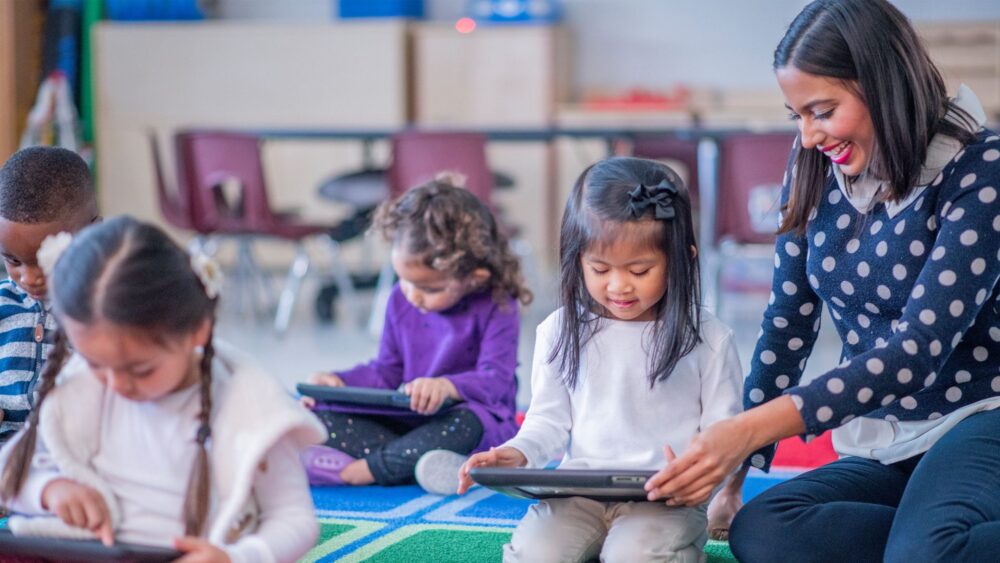11 Tips for Teaching in a Blended Learning Environment

Blended learning
Although blended learning has been implemented in some schools across the nation, it is not widely employed as a general educational strategy. Providing education in a mixed-media format that combines in-person instruction with online learning that teachers facilitate has been a buzzword that has been welcomed by a few people and misunderstood by many others but is the driving force behind a new era in education. The role of the teacher, physical location, personalization of the learning, and an online learning format are some aspects of a blended learning paradigm.
Suggestions for set up a mixed learning environment
Set up a mixed learning environment in your classroom by following some of the11 suggestions. There are three categories in which the advice can be categorized: planning, implementation, and improvement. No matter where you are on your blended learning journey, you should be able to find a suitable proposal.
1. Rethink the role you play in the classroom.
As a teacher, you play a crucial role in promoting deeper understanding. The position is changing, though, especially in blended learning settings. According to TNTP, a charity devoted to improving public education, teachers who use blended learning should learn to perceive themselves as individuals with three different duties. These include integration, supervision, and research and development. The three duties might be carried out solely by one teacher or jointly by a team of teachers.
2. Start by introducing the curriculum.
Learning goals, objectives, and outcomes are frequently identified by writing down what the upcoming two weeks or semester will cover. The description helps you find suitable digital resources, like games, online tests, and videos, and guarantees that you are familiar with the curriculum’s subject matter.
3. Specify Your Objectives
Goals eliminate the filler from a curriculum description, leaving you with a clear focus and objectives to meet.
4. Select a blended learning strategy.
You can select a blended learning approach once you have a clear idea of what you want to teach and what you want students to learn. There are six prevalent models: online driver, rotation, flex, self-blend, and face-to-face driver. The majority of the models have subtleties. For instance, the rotation model includes individual rotations, lab rotations, and rotation stations. The flipped classroom is another popular paradigm in which online training and information are offered both online and at home just like teachers are asked to explain the essay topics to students so they explain the key points about how to write a topic or they can also advise the student to check the online services such as Buy essays. After that, students attend a physical school for in-person assignments and practice. To make their lesson plans more interesting and challenging, some teachers employ one or more models.
5. Utilize Appropriate Technology Tools
Software changes frequently, thus it’s crucial to include the issues that have been resolved first. The choice of technology should be driven by goals, learning objectives and outcomes, blended learning models, and instructional approaches, not the other way around. Additionally, keep in mind that you might require many tools. Students have distinct learning styles and special needs. One educational game or digital tool probably won’t be effective for everyone.
But, in most cases use of digital technology is beneficial for those students who do not have proper information related to subject assignment when they are asked to write assignment they are not able to write it. In this scenario student opt for online digital services like Do My Essay UK-based.
6. Create a Blended Learning Environment in the Classroom
The way things are organized and look has an impact on how well students learn. Additionally, you might need to rearrange desks and chairs if you utilize a certain learning approach. Mark Philips, a teacher, and educational journalist, says in an article on Edutopia that student involvement in classroom design and layout can “empower them, establish community, and enhance motivation.” So you don’t necessarily have to do the work by yourself.
7. Review Coursework & Online Material Frequently
Online resources support other teaching resources. To ensure that students have a foundational grasp and a deeper understanding of both pieces of the subject, you should go over them both.
8. Establish goals
Set expectations because students succeed when they have objectives. If you teach kids how to achieve at home and in the classroom, they will.
9. The learning outcomes should be outlined.
The outcomes specify how students will accomplish goals and show that they are knowledgeable about the subject. Participation in class, online assignments, oral presentations, etc. are examples of specific outcomes.
10. Encourage Imagination, Critical Thinking, and Curiosity
When you pose the question “What if?” students begin to speculate and reflect. Both conventional teaching techniques and online content can be used to raise that query. Furthermore, kids will seek out answers more frequently if you ask them open-ended, challenging questions.
11. be persistent
Finally, keep in mind that success with blended learning takes time. If you don’t start seeing the results you want within the next two weeks, don’t quit. If you’ll just be patient with it for a little while longer, blended learning is effective.
Conclusion
The use of technology in classrooms is nothing new, but the integration and use of technology within a blended learning environment may be. In the next decade, a large number of schools will likely adopt blended learning as a way to appeal to students in the changing educational landscape.
Reference
TDH.2019.Good grades not a struggle anymore! Online available at: https://thedissertationhelp.co.uk/good-grades-not-a-struggle-anymore-10-tips-to-ace-your-dissertation/ accessed: 2-july-2022)
Eggers, J.H., Oostdam, R. and Voogt, J., 2021. Self-regulation strategies in blended learning environments in higher education: A systematic review. Australasian Journal of Educational Technology, pp.175-192
